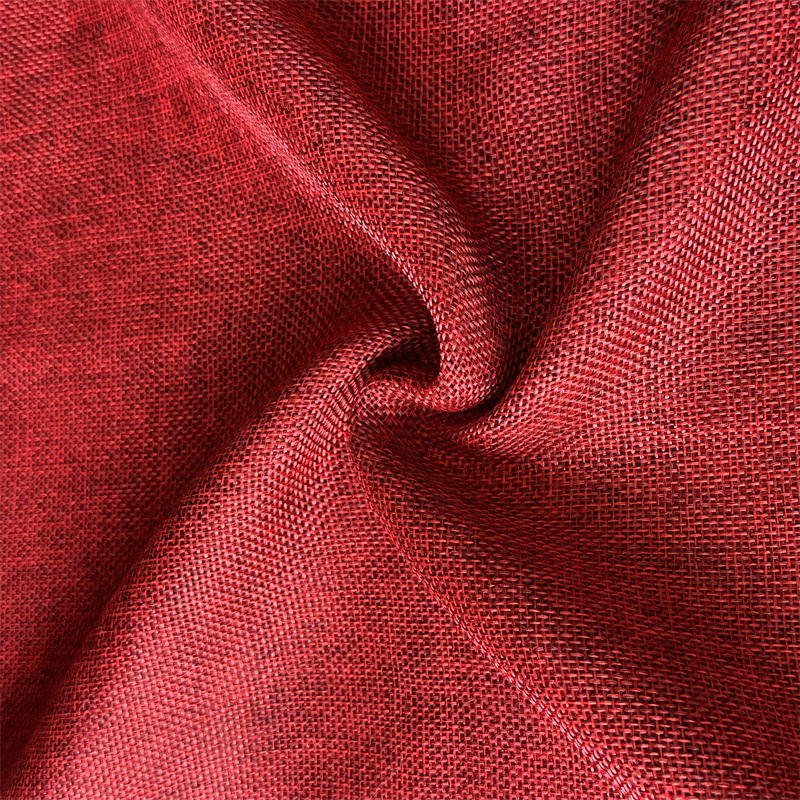In the ever-evolving world of textiles, polyester linen fabric has emerged as a game-changer for both fashion and home décor industries. Combining the natural beauty of linen with the resilience and versatility of polyester, this innovative fabric offers a unique blend that appeals to a wide range of consumers. Whether used in apparel, upholstery, or even accessories, polyester linen fabric has captured the attention of designers and manufacturers for its attractive features and practical benefits.
Polyester linen fabric typically features a distinct, natural texture that mimics the feel of pure linen, but with added durability and less maintenance. The combination of these two fibers has made polyester linen fabric highly desirable for a variety of applications, offering an elegant appearance with practical benefits.
Polyester linen fabric has gained significant popularity in recent years due to its balanced characteristics. The fabric is considered a more cost-effective alternative to pure linen, making it accessible to a wider market. Its enhanced durability, resistance to wrinkles, and ease of maintenance have made it particularly attractive for everyday use in both clothing and home décor.
The increasing demand for eco-friendly and sustainable materials has also contributed to the fabric’s rise in popularity. While pure linen is derived from the flax plant, polyester is a synthetic material. However, many polyester linen blends are now made with recycled polyester, further reducing their environmental footprint. This aligns with the growing trend of eco-conscious consumers seeking more sustainable options without compromising on quality or style.
One of the primary advantages of polyester linen fabric is its durability. The polyester fibers strengthen the inherent properties of linen, making it more resistant to wear and tear. This makes polyester linen fabric ideal for items that undergo frequent use, such as upholstery, curtains, and even everyday garments like shirts and dresses.
Linen, while valued for its natural texture and breathability, is notorious for wrinkling easily. Polyester, however, is much more resistant to creasing. When combined, these fibers create a fabric that retains the charming appearance of linen but with much less effort required to maintain a smooth, wrinkle-free look. This is a significant advantage for busy consumers who want the aesthetic appeal of linen without the hassle of constant ironing.
Despite its synthetic content, polyester linen fabric retains the breathability and lightweight feel of pure linen. It is an excellent choice for warmer climates or for garments that need to be comfortable and airy. The fabric allows air to circulate freely, keeping the wearer cool and comfortable throughout the day.
Unlike pure linen, which requires delicate care and is prone to shrinking, polyester linen fabric is much easier to maintain. It is machine washable, quick-drying, and resistant to fading. This makes it a practical option for people who want the luxurious feel of linen without the high maintenance.

As mentioned, the growing availability of polyester made from recycled materials is an important benefit for eco-conscious consumers. Sustainable polyester linen blends are now widely available, offering a more environmentally friendly alternative to conventional fabrics while still maintaining the aesthetic and functional properties of linen.
Polyester linen fabric is incredibly versatile, making it suitable for a wide range of design applications. Its ability to hold color well ensures that it comes in a variety of vibrant hues and patterns. Whether used for elegant clothing, casual wear, or home furnishings like cushions, curtains, and table linens, polyester linen fabric can be adapted to suit many different styles.
Polyester linen fabric has found a strong presence in the fashion industry, particularly for warm-weather clothing. The fabric’s breathable nature makes it perfect for creating summer garments such as dresses, shirts, blouses, and skirts. Its smooth texture and rich appearance lend a sophisticated touch to both casual and more formal attire.
In home décor, polyester linen fabric is commonly used for creating beautiful yet durable upholstery, cushions, throw pillows, and even bedding. Its ability to maintain its shape and resist fading makes it a preferred choice for high-traffic areas in homes and offices. Curtains and drapes made from polyester linen fabric add a refined look while still being easy to care for.
Due to its sturdiness and versatile design potential, polyester linen fabric is also used in the production of bags, tote bags, and other accessories. The fabric's ability to hold structure while providing a soft and natural texture makes it a popular option for everything from beach bags to sophisticated handbags.
Tablecloths, placemats, and napkins made from polyester linen fabric are widely used in homes and restaurants. The fabric adds a touch of elegance to dining areas while being durable enough to handle frequent washing and use.
While polyester linen fabric offers numerous benefits, it is not without its drawbacks. Some consumers may prefer the feel and authenticity of 100% linen, especially in high-end fashion or luxury home décor. Additionally, while polyester is durable, it does not have the same level of biodegradability as natural fibers, and some individuals may be concerned about its environmental impact despite the use of recycled polyester.


 中文简体
中文简体 Español
Español











